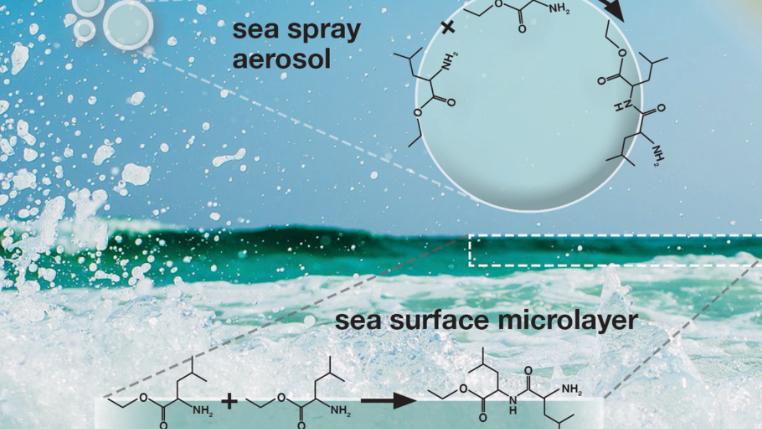Veronica Vaida
Professor of Chemistry
- Ph.D., Yale University, 1977
Research Interests
Building Chemical Complexity in planetary atmospheres: Spectroscopic Studies of Atmospheric Molecules, Radicals, and Their Complexes. Professor Vaida's research interests focus on issues of photoreactivity in planetary atmospheres, including the contemporary and ancient Earth. The approach employed to obtain the structure and dynamics of molecules, radicals, and their complexes involves a combination of spectroscopic, photofragment and theoretical techniques. Aqueous environments, especially water-air interfaces as available at the sea surface and on atmospheric aerosols are special reaction environments investigated by the Vaida group with surface sensitive spectroscopic methods.
Current Research
Our program explores water- and sunlight-mediated processes in planetary atmospheres including the contemporary and prebiotic Earth. My approach aims to provide new input for models of atmospheric chemistry and climate, using fundamental chemical physics to address complex multiphase chemistry. Current research has used oxoacids in aqueous environments to illustrate the environmental chemistry that generates complex self-assembled organic aggregates. The Earth's ocean-atmosphere, a sunlight-driven photochemical reactor, is a large and complex system, but has been altered over its existence through both natural and anthropogenic events. In this global reactor, chemistry occurs in all phases, although gas phase chemistry has received the most attention. It has long been established, however, that heterogeneous and multiphase reactions can be extremely important for a fundamental understanding of environmental chemical reactions, which affect chemical processing, air quality, and ultimately visibility, human health, and the planet’s temperature. Starlight provides energy capable of driving planetary processes, which increase a system’s chemical complexity. Sun-initiated reactions generate high-energy molecules that are precursors to metabolism as it has evolved in life on Earth. Our experiments are designed to investigate the photochemical synthesis and reactivity of organic systems under conditions representative of Earth’s contemporary and ancient atmosphere and study the effect of water on reactivity.
Collaboration within CIRES allowed analysis of the importance of the aqueous phase photolysis of atmospherically relevant species. Our laboratory measurements of the rate of the photochemical reaction of oxoacids in solution were used as input for an atmospheric model that compared the loss of pyruvic acid through aqueous photolysis to the loss from the gas-phase photochemistry and oxidative processes. Results indicated that in an acidic environment, the aqueous photolysis is equally as important as the gas-phase photolysis, emphasizing the importance of developing a mechanistic understanding of aqueous-phase photochemical processes. Currently we study the special reactivity of organic acids at the water-air interface by comparison with reactions in bulk aqueous phase. Contributions from chemical processes at the surface of water, as would be found at the surface of oceans, lakes, atmospheric aerosols clouds and fog are obtained to inform atmospheric models.
We have scaled the fundamental experimental work with organic acids to realistic atmospheric conditions by using environmental chamber studies. Specifically, we are using the CESAM (French acronym for Experimental Multiphasic Atmospheric Simulation Chamber) at the Université Paris–Est Créteil Val de Marne (UPEC) in collaboration with Professor Jean-François Doussin. By combining these laboratory and chamber studies, we connect our understanding of the photolysis of pyruvic acid to mechanisms for aerosol nucleation and growth.
Research Categories
Atmosphere, Chemistry, SpaceResearch Images
Honors and Awards
to
Invalid date -Sponsors
-
Invalid dateP.I.(s)
About CECA
CECA connects and creates a supportive environment for graduate students and postdocs who come from various academic units to do research in CIRES.
